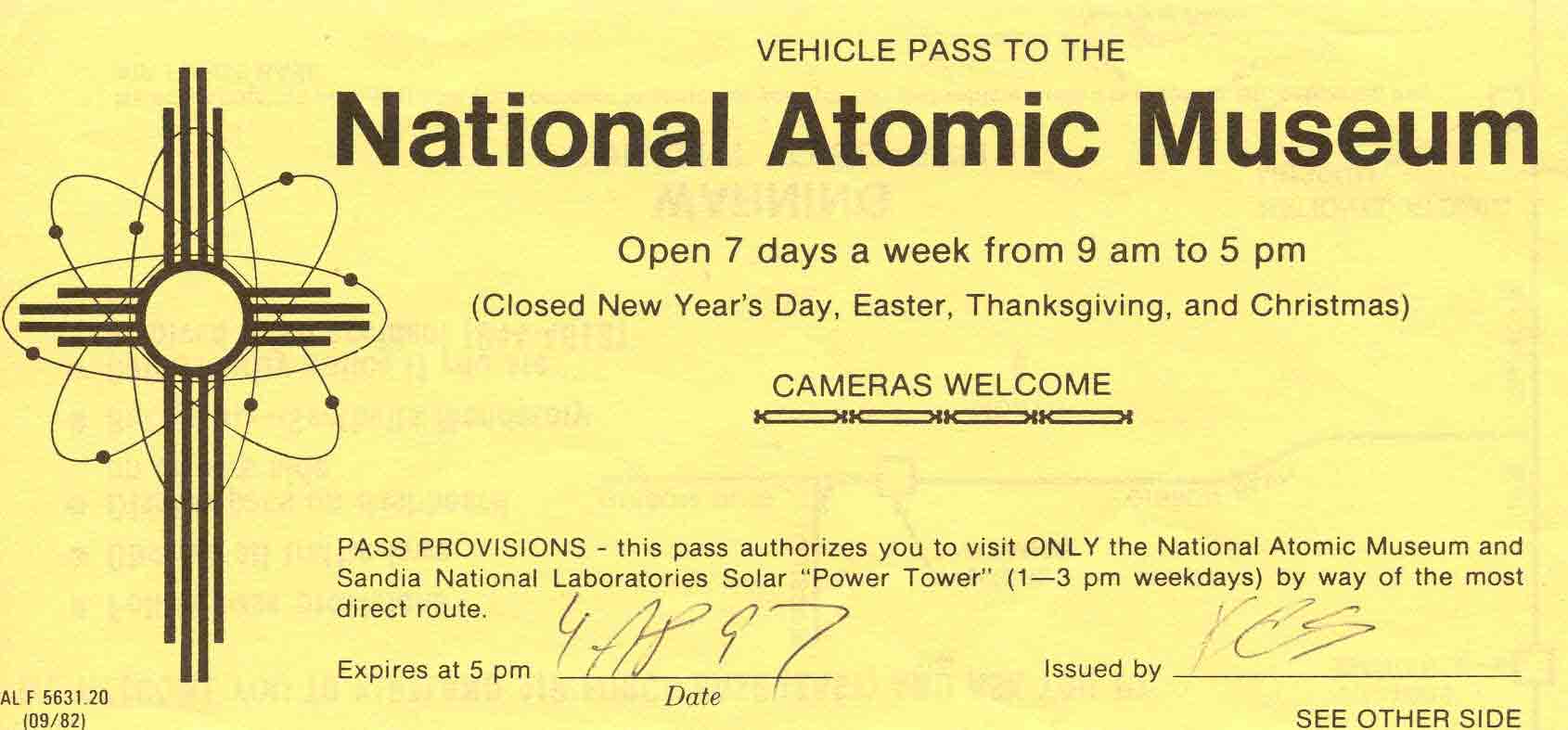

|
Home
The
CD Book
View Parts of the Book
Book Reviews & Quotes
History
The
Big List of Leadership
History of the Manhattan Project Atomic
Traveling
|
 Before you start your journey to explore any of the thousands of nuclear weapons-related sites: Prepare. Check the Internet for current information about the site, and if you can call ahead, do so. Remember that for those place still in operation facility hours vary throughout the year and will change without notice, particularly since the events of September 11, 2001. Some tours require reservations months ahead of time due to a large public demand or to allow sufficient time for a security check of the visitors, which sometimes involves the FBI. If you are not a U.S. citizen, you may need to allow more time than usual for the security review.
Before you start your journey to explore any of the thousands of nuclear weapons-related sites: Prepare. Check the Internet for current information about the site, and if you can call ahead, do so. Remember that for those place still in operation facility hours vary throughout the year and will change without notice, particularly since the events of September 11, 2001. Some tours require reservations months ahead of time due to a large public demand or to allow sufficient time for a security check of the visitors, which sometimes involves the FBI. If you are not a U.S. citizen, you may need to allow more time than usual for the security review.
Most of the facilities described in The Traveler's Guide To Nuclear Weapons are private property, so atomic tourists should obtain permission before entering them. Do not trespass. Since some inner-city neighborhoods are pretty rough, you should take along a companion and plan to visit those sites at an appropriate time of day. Typically, local residents, and even the workers at many facilities, are surprised to learn that such historically significant activities occurred in their community or place of employment. Radiation hazards may still exist at some locations. If you can (some sites are in back country), discuss this issue with a site representative before beginning your trip. Some industrial and high-security facilities require visitors to view a safety orientation film, pass through metal detectors and radiation screening devices, and wear film badges to record radiation exposure.
To safely tour some sites, you may need to prepare as for an overnight camping trip. Be sure that your vehicle is suitable for the roads you anticipate driving. Visitors to remote areas should start with a full gas tank and bring plenty of drinking water. Mobile telephones may be useful in emergencies, but in the back country cell phone towers either don't exist or are scarce. Consider bringing along a compass or GPS unit, raingear, and extra layers of clothing. Other supplies that can make your venture more informative and enjoyable include a camera (with a zoom lens, if appropriate), a pair of binoculars, and a Geiger counter. (You are more likely to detect low levels of radiation from either natural sources or building materials than from nuclear weapons related activities.) Dress should be suitable to the environment, e.g. boots and long pants for rattlesnake country, and casual street clothes for national laboratories.
Although The Traveler's Guide To Nuclear Weapons contains maps of every facility, before you climb into your vehicle review current local maps, including detailed state highway and city street maps. Since geography changes, you should be prepared for modifications to the sites and surrounding roads. Unless otherwise noted, visitors can usually drive to all of the sites, and public transportation is often available in urban areas.
The photograph at the left illustrates what happens when a Geiger counter passes near a sample of Carnotite uranium ore from the Colorado Plateau. The average concentration of uranium in this type of rock is about 0.25%.
All contents copyrighted ©2002 Historical Odysseys Publishers